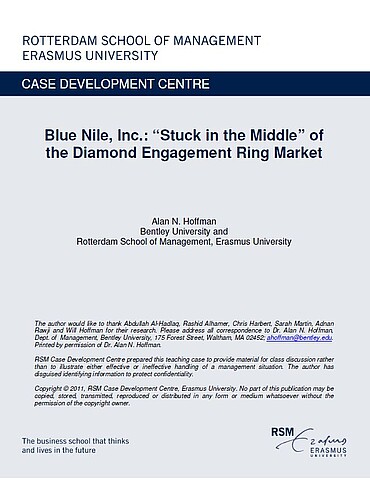Citation Note
Based on published sources; 17 pages.
Follow the 'handle' link to access the Case Study on RePub.
For EUR staff members: the Teaching Note is available on request, you can contact us at rsm.nl/cdc/contact/
For external users: follow the link to purchase the Case Study and the Teaching Note.
description
Working to become “the Tiffany for the next generation,” Blue Nile, the largest online retailer of diamond engagement rings, was stuck in the middle of the market. How could Blue Nile move up the ladder and become a high-end diamond retailer? Was it possible at all for an “online only” retailer?
Abstract
Abstract: Built on the premise of making engagement ring selection simpler, Blue Nile has developed into the largest online retailer of diamond engagement rings. Unlike traditional jewelry retailers, it operates completely store-front-free, without in-person consultation services. Working to become “the Tiffany for the next generation,” however, Blue Nile is “stuck in the middle” of the diamond engagement ring market. It is not at the top end of the jewelry retail market, with the likes of Tiffany & Co. or DeBeers. It is neither at the low end of the market, with the likes of Amazon or Overstock.com. As Blue Nile increasingly grows its market share, competitors at both the high end and the low end are looking to squeeze into the middle niche that Blue Nile dominates. Since “the middle is the worst place to be” (Michael Porter), the challenge for Blue Nile is how to move up the ladder and become a high-end diamond retailer—not an easy task for an “online only” retailer.
usage
This case is written in a way that complex strategic decisions can easily be analyzed during limited classroom discussion time. Professors have commented that the case has worked well in their classrooms.
